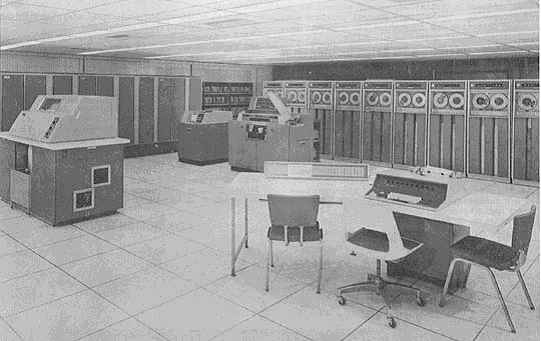|
H-800 was a transistors technology
system.
It was announced in 1958, delivered in December 1960.
A total of 89 systems were delivered.
Its main characteristics was to time-share the processor between up to 8
(H-400 compatible) programs under hardware control allocating successive
cycles to different programs. [the hardware multiplexing
used in H-800 was similar to that delivered later on CDC6600]
48-bits (+2) words, that may
contain 4 decimal digits signed or unsigned or 8 alphanumeric characters
Instruction word of 48 bits: 6-bits Op code, 6-bits index, 13-bits A and
B addresses, 10-bits C-address.
Co-routines handling was
implemented by using two instruction counters and return address
registers. Each program had a total of 32 registers (among which 2
program counters, 2 return address history registers, 8 indexes, 1 base
address, 1 mask index, 12 general purpose registers)
I/O were handled under control of
up to 16 controllers using a data chaining feature (scatter-gather).
This machine implements eight
virtual processors, each having 2 program counters and an individual
interrupt vector base register. On each memory cycle the hardware scans
on a priority basis for activity on eight input controllers, then eight
output controllers, and then the CPU. Within the CPU the hardware scans
the virtual processors in a cyclic manner (with various exceptions for
multiple memory cycle operations). |
